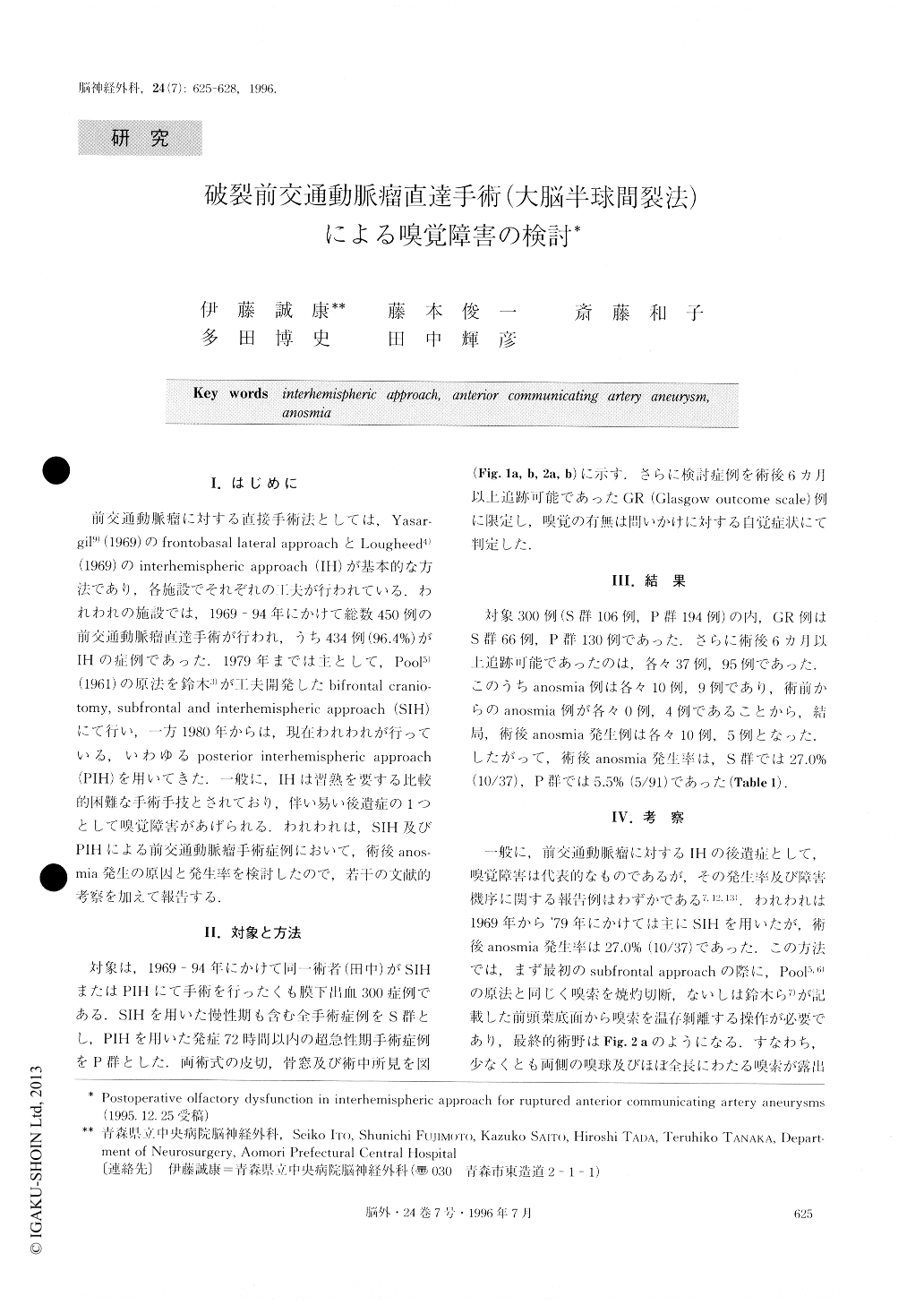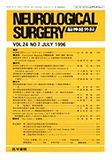Japanese
English
- 有料閲覧
- Abstract 文献概要
- 1ページ目 Look Inside
I.はじめに
前交通動脈瘤に対する直接手術法としては,Yasar—gil9)(1969)のfrontobasal lateral approachとLougheed4)(1969)のinterhemispheric approach(IH)が基本的な方法であり,各施設でそれぞれの工夫が行われている.われわれの施設では,1969-94年にかけて総数450例の前交通動脈瘤直達手術が行われ,うち434例(96.4%)がIHの症例であった.1979年までは主として,Pool5)(1961)の原法を鈴木3)が工夫開発したbifrontal cranio—tomy,subfrontal and interhemispheric approach(SIH)にて行い,一方1980年からは,現在われわれが行っている,いわゆるposterior interhemispheric approach(PIH)を用いてきた.一般に,IHは習熟を要する比較的困難な手術手技とされており,伴い易い後遺症の1つとして嗅覚障害があげられる.われわれは,SIH及びPIHによる前交通動脈瘤手術症例において,術後anos—mia発生の原因と発生率を検討したので,若干の文献的考察を加えて報告する.
Between 1969 and 1994 we treated 450 patients with ruptured anterior communicating artery aneurysms, of which 434 cases (96.4%) were operated on via the in-terhemispheric approach (IH), namely, until 1979 main-ly, via bifrontal craniotomy, subfrontal and interhemi-spheric approach (SIH) and, since 1979, via posterior in-terhemispheric approach (PIH). Postoperative olfactory dysfunction is one of the main disadvantages of IH. The mechanisms and the incidence of this disadvantage were studied in both approaches. The causes of postop-erative anosmia in SIH were as follows: sectioning ofolfactory tracts intentionally or not, avulsion of olfac-tory bulbs and probability of ischemic or minor mecha-nical insults to olfactory tracts. However, these matters rarely occur in PIH because of little exposure of olfac-tory nerves. The mechanisms of postoperative anosmia in PIH were considered to be as follows: sinking of frontal lobes due to excessive drainage of cerebrospinal fluid and over-retraction of frontal lobes. The incidence of postoperative anosmia decreased from 27.0% via SIH to 5.5% via PIH.

Copyright © 1996, Igaku-Shoin Ltd. All rights reserved.


